Hoya Pubicalyx is native to the Philippines. This tropical epiphytic vine has long climbing tendrils. Those tendrils grab and cling as the vine travels. They enjoy trellising, meandering along shelves, and hanging from baskets.
The elegant lance shaped leaves are sprinkled with splash. Overall it is a very attractive plant. And it is one of the easiest Hoyas to care for. 🙂
Definitely a keeper.
This is a fast growing plant that grow 6 to 8 feet indoors. It can grow outdoors in plant zones 10b to 11b. Its best grown in containers or baskets on your patio.
If you plant it in the ground in tropical conditions it will love a good trellis.
Just be careful it does not take off and become a garden menace.
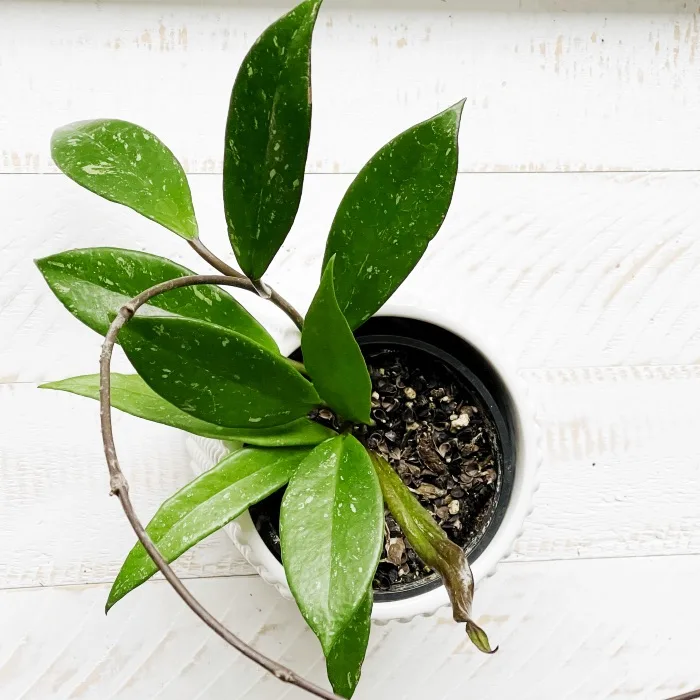
Hoyas are commonly known as wax plants. They are somewhat succulent with minimal water needs. but they DO enjoy humidity.
They have thick leaves with a waxy feel. Those leaves hold water. This helps the plant resist drought conditions. All Hoyas HATE overwatering. Give them moderate to bright light, airy well draining soil, and water when dry.
These plants are almost too easy for helicopter plant parents like me. Overwatering will quickly result in root rot.
I use a moisture meter to save them. Hoyas are a good choice for a moisture meter. Otherwise don’t water unless the soil is dry an inch down. You can check it with your finger.
Wax Flower Plant:
The Pubicalyx, like all Hoyas, is a flowering plant. The flowers grow on umbels. The flower clusters hang off the vine in colorful balls.
The flowering vines are delightfully fragrant. you’ll notice the fragrance most during the evening hours.
Flowering tips:
- Leave the plant alone. To get flowers do NOT handle or cut the vine.
- Do NOT move the hoya in flowering season.
- Make sure there is adequate light
- Keep your hoya plant properly fed and watered.
- After flowering DON’T deadhead the flowers. These vines grow on the old stems. Let them alone and they will take care of themselves. 🙂
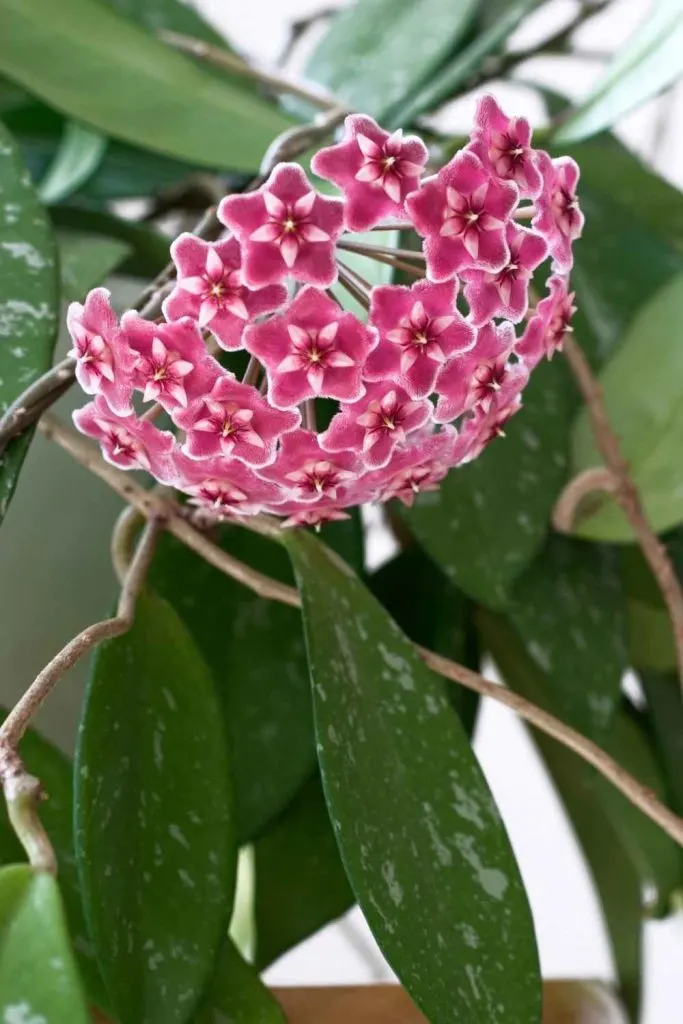
Hoya Pubicalyx Splash:
Hoya Pubicalyx cultivars express Blister variegation. It is genetically determined by two distinct cells types hardwired into the genetics of the plant.
The surface tissue cells have irregularly placed oxygen cells under them that reflects light in silver colorations. We see this type of variegation in some Pilea plants as well.
This type of hoya variegation is called splash. It is distributed irregularly over the leaves in various sizes that resemble drops of water splashed on the leaves.
Blister variegation is not affected by light or other environmental conditions. In other plants like the Marble Queen and other pothos, increasing Light will increase the intensity of variegation. And you will see more of it. Not so with Hoya splash.
Blister variegation is a genetic variegation similar (but the not the same) as the Philodendron Birkin’s Chimeric form of variegation.
If you propagate hoya vines by taking cuttings or tissue propagation the baby vines will tend to revert to the ‘mother vine’ variegation.
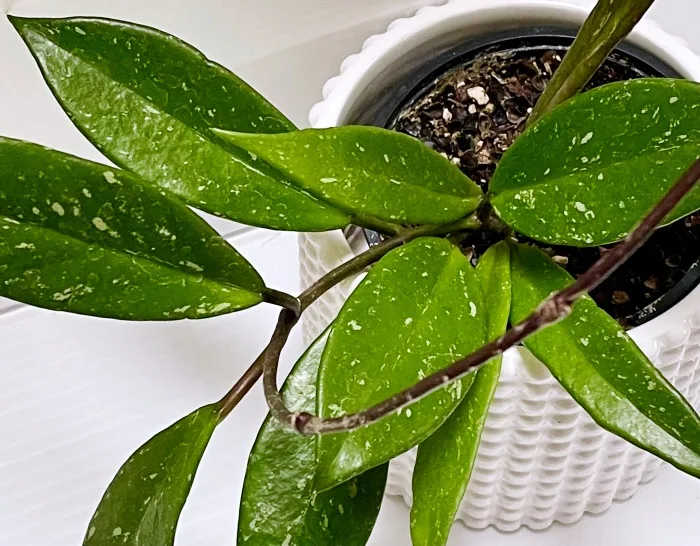
This is not the same as the patterned variegation of the carnosa Princess
Popular Cultivars:
The Pubicalyx flowers in different colors with different cultivars. Here are a few of them. Click the links to see them on Etsy.
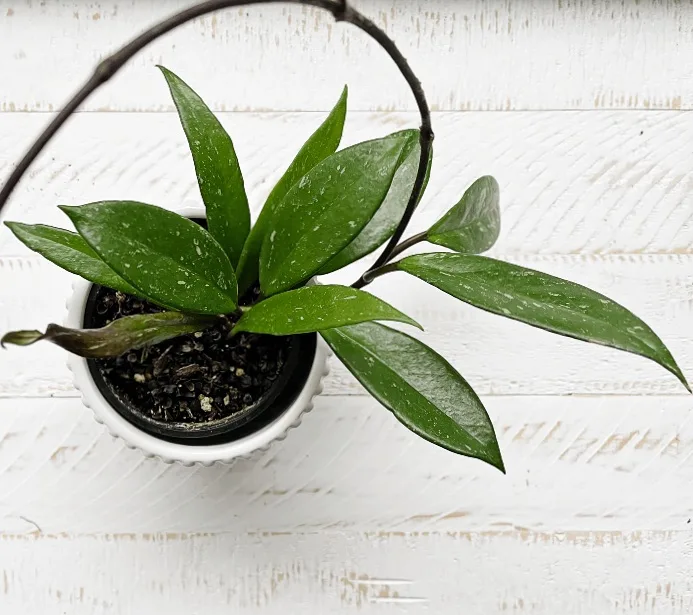
Hoya Pubicalyx care Guide:
Read our detailed printable care guide to get all the tips on growing a lovely healthy Hoya.
Hoya Pubicalyx Care Guide

Hoya pubicalyx plants are slightly succulent vines with lance shaped leaves, strong stems and somewhat thick waxy leaves. These are fast growing, flowering vines with a sweet honey smell.
Pubicalyx vines enjoy trailing and can also be trellised. They grow to about four feet long.
This Hoya vine is easy care. However all hoyas are susceptible to root rot. Pay particular attention to the watering needs of this plant.
Tools
Instructions
Soil Preference:
- This plant requires a light well draining soil mix. Hoyas cannot tolerate water logged soil compacted around the roots.
- A mix of potting soil, succulent soil mix and orchid soil mix (look for one with a lot of peat and finer bark mix) will keep the roots happiest.
- We use two parts potting soil to two parts succulent mix to two parts orchid bark. You can also use sand instead of bark if that is what you have.
- A heavy soil potting mix is not recommended for this plant.
- Due to this senstivity to over watering LECA growing is recommended. See our LECA Post series here.
Pot Size and Type:
- This plant needs a pot only an inch or two above the previous pot size. Chooosing too large a pot can encourage root rot.
- This Hoya will tolerate being root bound better than a roomy pot with too much soil. That will encourage wet conditions around the roots.
- Porous pots will work well for the Hoya. Terra cotta wicks away excess water from the soil. These plants enjoy a pot that breathes and keeps their feet dry.
- Repot every second year or when roots come out the drainage holes on the pot bottom.
Lighting:
- The Hoya pubicalyx enjoys strong indirect light. It also appreciates direct light from a south or west facing window for four to six hours a day. Just watch high heat conditions.
- Shield this plant from strong direct light in summer south and west sunny windows. The leaves can burn in intense heat and light.
- Tips: Window sheers or blinds can offset longer periods of high direct light.
- In darker winter months the plant will most likely go dormant. If it appears to need more light you may find an indoor grow light helpful in darker climates.
Watering:
- Hoyas are VERY easy to overwater.
- Try a watering schedule of every week. Water thoroughly until the water runs out of the pot.
- Watering is best done on a regular schedule so the plant is not over or under watered. Both can cause stress on the plant.
- Never let this plant get wet feet. Hoya plants need to dry out between waterings. But the roots need hydrating too. for this reason I use a moisture meter and water when the root zone is almost or lightly in the dry zone.
- They cannot tolerate heavy compacted wet soil. If the soil is compacted the bottom of the soil can remain wet which encourages root rot and fungus gnats.
- Hoya roots need a lot of oxygen and will tolerate drier conditions.
- These plants are good candiates for growing in semihydroponics like LECA.
Humidity:
- Hoyas need humidity of 60 to 70% or more to be happy.
- TIPS: Set the container on a pebble tray with water under the pot or provide a humidifier to this tropical plant for best growth and happiness.
- Make sure you are not keeping your plant next to a heat or air vent. This will dramatically lower the humidity level.
- humidity also improves when you group plants together more closely.
- If the leaf tips go yellow or the leaves curl under on the edges. suspect humidity is too low.
How to Fertilize:
- Hoyas require regular fertilizing.
- Apply a good quality fertilizer (linked in materials) monthly through Spring and summer.
- Alternately you can use a slow release fertilizer at the beginning of the growing season.
- Decrease feedings by late Fall and allow the plant to rest through the winter months.
Temperature:
- Keep this plant at a low of 50 Degrees F. to upward of 85 Degrees F. It enjoys warmth and humidity.
Hoya Flowers:
- Hoya wax plants flower beautifully in bright clusters. You will love the honey sweet scent.
- Things to know about flowering.
- This plant grows flowers on umbels in clusters. The flowers are star shaped, small and fuzzy. They can vary in color but the flower cluster pictured below is typical for the Bella.
- Expect flowers on your Bella from May to September if it has the correct growing conditions.
- If your plant is not flowering move it to better light and fertilize it if it is otherwise healthy.
- One more thing. Hoyas flower on spurs. These are permanent features of your plant. Do NOT cut off the spurs. You will eliminate the flowering bodies on your Hoya.
- If you Notice nectar dripping off the flowers. This is normal. Don't let it concern you.
Pests:
- Hoyas can be attacked by pests. All sap suckers really enjoy the Hoya.
- Stress by longterm overwatering, poor light, extreme temperatures and soil conditions are contributors to plant stress..
- Spider mites, mealy bugs, scale, thrips and whitefly are the most common houseplant pests you will see.
- Learn How to get rid of aphids and other pests with our homemade pesticide soap recipe with neems oil.
- To minimize the possibility of pests be sure to check all nursery plants before bringing them home.
- Quarantine all new plants until you are sure no pests live in them.
How to Propagate:
- This plant is easily propagated through stem cuttings or air layering..
- Start with a healthy length of vine from your Hoya plant.
- Cut in the internodal zone. We show you how in the Pothos Propagation post
Hoya Pubicalyx splash:
- Hoya splash is not true variegation. Rather it is Blister Variegation. This means the plant surface tissue raises in genetically controlled patterns. This causes a reflective look to the variegation.
- If you propagate this vine it will tend to revert to the original 'mother vine' blister variegation. So choose a good Splashy mother vine if you enjoy the splash. 🙂
Toxicity:
- 1. This plant has moderately toxic sap.
- 2. Hoya Plants Filter toxins out of the air in your home or office.
Notes
All hoya plants have similar care needs. The video below will give you a quick general hoya care guide.
Related Content:
Follow Us:
Find us on YouTube, Instagram , Pinterest and TikTok! We love to Plant chat. We also comment, like and occasionally share your content to our daily stories. We’d love to see your plants. Share your joy in your houseplants. Happy Planting!
Related Posts:
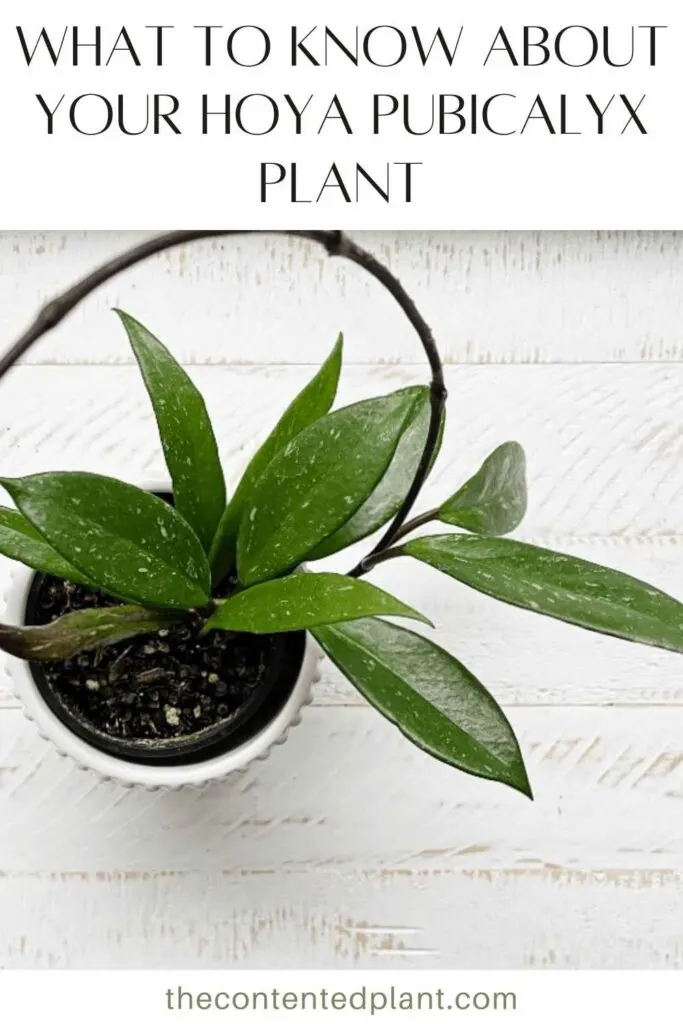

Deb Woolcox
Thursday 6th of April 2023
The stems of my Hoya Pubicalyx Splash Wax have little bumps all over them. They can be scraped off with my fingernail but then it leaves a tiny hole in the stem. The plant itself is growing beautifully, it is getting new growth. This is on some of my other Hoya plant stems and trendails also. Is it a disease? Is it corking? I have had all my Hoyas started from 2-3 leaves for the last 3-4 years. I do not want to lose them.
Diane Williams
Thursday 13th of April 2023
Hi Deb, Sorry for the late reply, I just found this. Could it be scale? Since I can't see the problem I am guessing. If you have more clues, send them on. If it is scale we have a post on how to kill them.